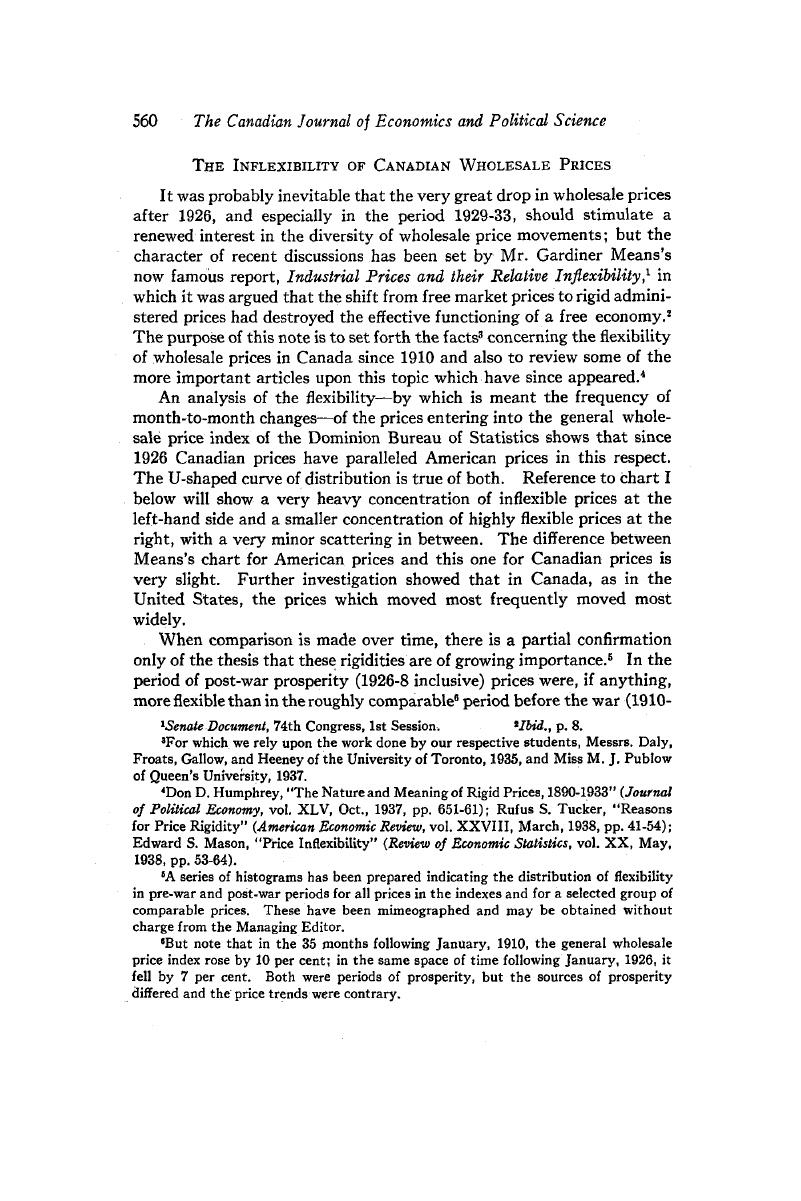No CrossRef data available.
Published online by Cambridge University Press: 07 November 2014

1 Senate Document, 74th Congress, 1st Session.
2 Ibid., p. 8.
3 For which we rely upon the work done by our respective students, Messrs. Daly, Froats, Gallow, and Heeney of the University of Toronto, 1935, and Miss M. J. Publow of Queen's University, 1937.
4 Humphrey, Don D., “The Nature and Meaning of Rigid Prices, 1890-1933” (Journal of Political Economy, vol. XLV, 10, 1937, pp. 651–61)CrossRefGoogle Scholar; Tucker, Rufus S., “Reasons for Price Rigidity” (American Economic Review, vol. XXVIII, 03, 1938, pp. 41–54)Google Scholar; Mason, Edward S., “Price Inflexibility” (Review of Economic Statistics, vol. XX, 05, 1938, pp. 53–64).CrossRefGoogle Scholar
6 A series of histograms has been prepared indicating the distribution of flexibility in pre-war and post-war periods for all prices in the indexes and for a selected group of comparable prices. These have been mimeographed and may be obtained without charge from the Managing Editor.
6 But note that in the 35 months following January, 1910, the general wholesale price index rose by 10 per cent; in the same space of time following January, 1926, it fell by 7 per cent. Both were periods of prosperity, but the sources of prosperity differed and the price trends were contrary.
7 From May, 1920, to January, 1922, the fall in the general wholesale price index was 41 per cent or at the rate of 2.5 per cent per month, compounded monthly; from August, 1929, to February, 1933, the fall was 36 per cent or less than 1.0 per cent per month.
8 Mills, F. C., The Behavior of Prices (New York, 1927).Google Scholar
9 Humphrey, , “The Nature and Meaning of Rigid Prices”, p. 656.Google Scholar
10 Rufus S. Tucker, drawing upon various sources for periods as follows, 1791-1810, 1811-30, 1821-40, 1841-60, 1837-44, 1840-7, 1873-80, and 1890-7, argues that, histori-cally, the change has been toward a greater flexibility in prices rather than the reverse (“Reasons for Price Rigidity”).